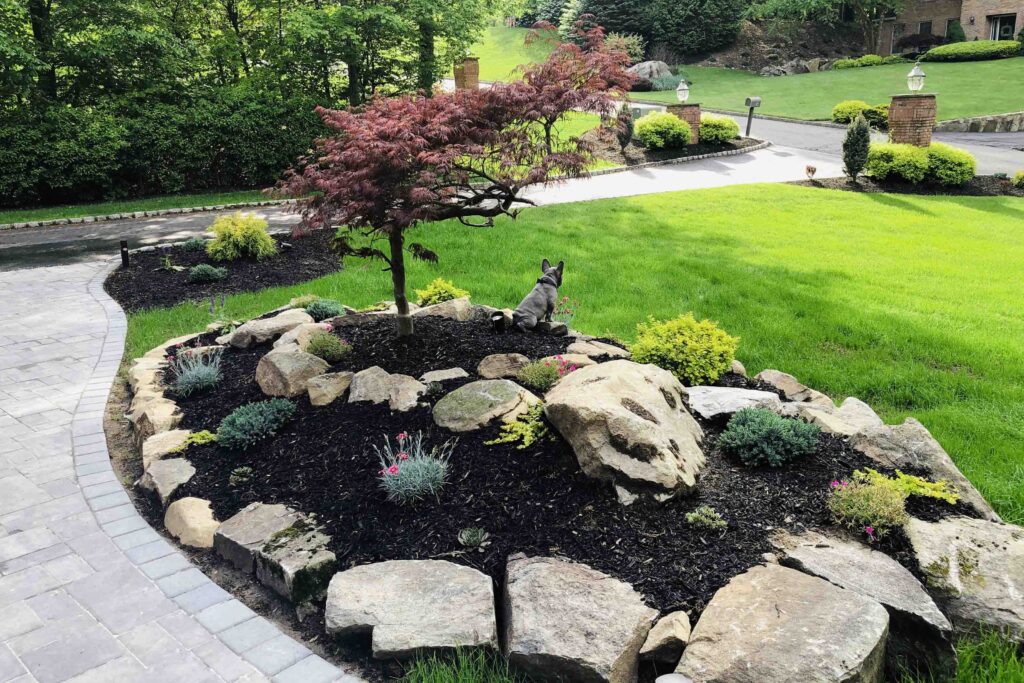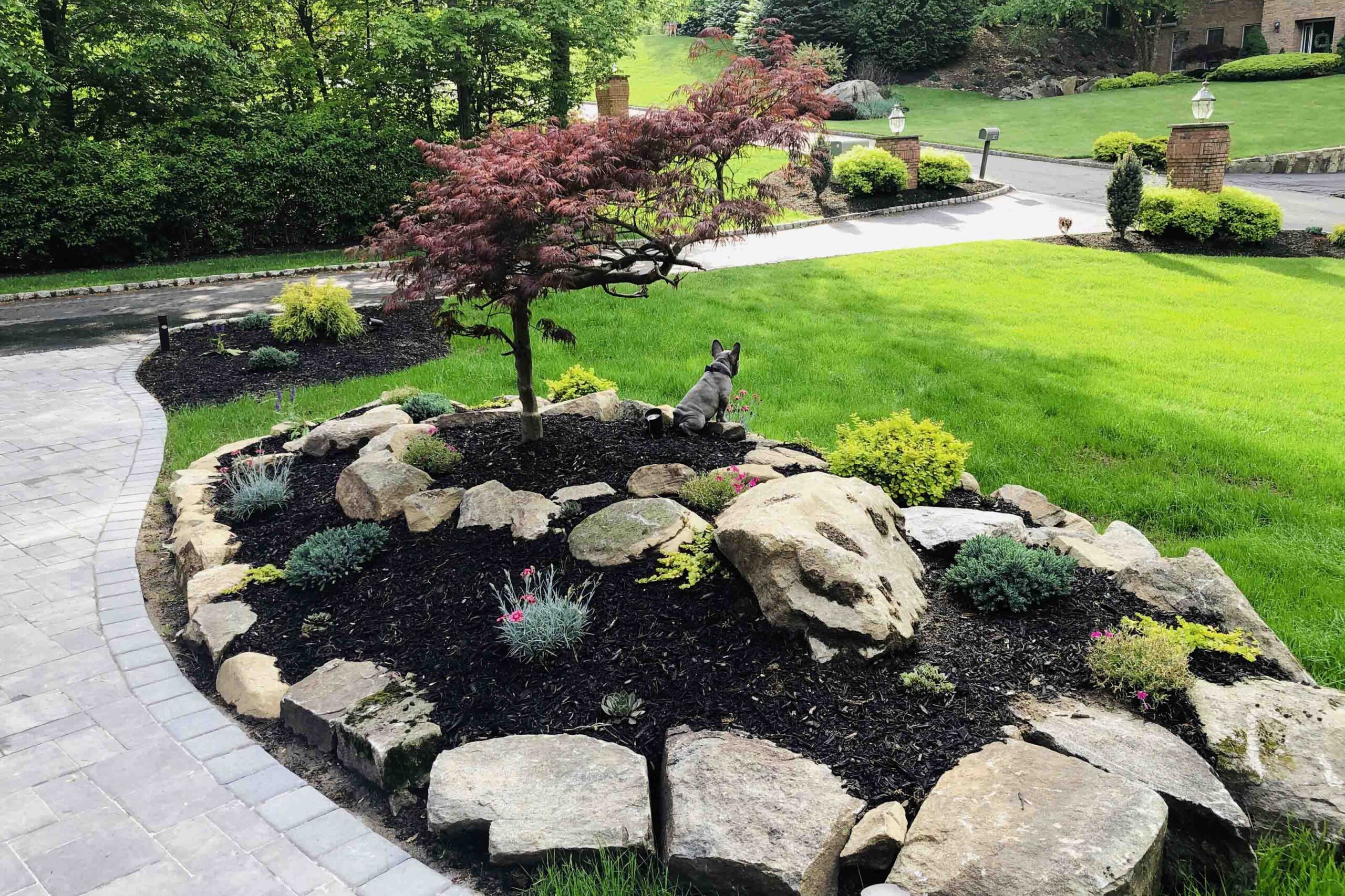As the [population] grows, communities use more resources and generate more waste. Environmental agencies are looking closely at urban landscapes for solutions to long-term pollution problems. Consequently, legal restrictions are
being placed on landscape design and maintenance practices.
Role of Landscape Managers
Landscape contractors and site managers can efficiently manage resources so as to reduce waste and prevent pollution. With forethought, they can design and maintain sustainable landscapes that are cost-effective and environmentally sound.
What Are Sustainable Landscapes?
Sustainable landscapes are managed with practices that conserve limited, valuable natural resources, reduce waste, and prevent pollution of the air, water, and soil. The goal is to provide as much value as possible with the least environmental impact.
What Are the Benefits of Sustainable Landscaping?
Traditional landscaping often requires a great deal of water, energy, labor, and another resource — in which case environmental and economic costs might outweigh the natural benefits of urban landscapes. By contrast, sustainable landscapes (a) rely on healthier, longer-lived plants that (b) requires little or no chemical pesticide and fertilizer use, (c) dramatically reduce water use, and (d) cut back on waste generation and disposal. Sustainable landscapes also need less maintenance and do not pollute groundwater. check some of the best landscaping tiles designs ideas at http://www.ecosenselandscaping.com/low-maintenance-ways-to-clean-your-floor-tiles/
Using Sustainable Practices
Sustainable landscapes need not be hot, dry gardens of cactus and gravel. They can include beautiful flowers and other plants, shrubs, and trees that reduce maintenance costs while protecting the environment. Using sustainable landscape
maintenance practices makes good business sense. They decrease (a) resource depletion, (b) waste generation, and (c) pollution problems, at the same time rehabilitating the landscape in a picturesque and cost-effective manner.
Build Healthy Soils
Healthy soils are essential in urban landscapes. Organic matter additions (compost or humus) can transform poor soils into a fertile growth medium that supports healthy plant growth while reducing water and fertilization requirements. Healthy disease and pest-resistant plants improve landscape appearance and increase property values.
Use Mulch
Use shredded or chipped plant materials with the necessary wood content as a mulch cover over the soil in planting beds and other bare areas in the landscape.
Mulch will
(a) insulate plant roots, (b) prevent weed growth and water loss, and (c) control erosion, dust, and mud. Mulch decomposition conditions the soil and adds nutrients.
Irrigate Efficiently
Don’t waste water! Overwatered plants may grow too fast. The runoff contributes to groundwater pollution. Use water-efficient irrigation systems, such as drip or low-output sprinkler heads, that deliver a precise volume of water to plant root zones. Develop watering schedules based on historical or actual weather data. Use soil probes to monitor soil moisture before watering.

Limit Fertilization
Use precisely the right amount of fertilizer at the right time. If you fertilize correctly, plants won’t grow too fast and will instead be healthy and disease- and pest-resistant. Fertilize according to the needs of the individual plant. Use slow-
release or organic formulas based on nutrients needs to be verified by soil testing. This will reduce growth spurts that increase the need for pruning and mowing.
Grasscycle Turf Areas
Use mulching mowers that leave grass clippings on the lawn as you mow. They decompose quickly and release valuable nutrients back into the soil. You’ll use less water and fertilizer, reduce maintenance costs, and create no waste. If you’ve been mowing often enough, the clippings will be short and won’t cover the grass.
Prune Selectively
Excessive and haphazard pruning of shrubs and trees is wasteful and unhealthy. Pruning should be used only to maintain natural growth patterns. Hedging, topping, and shearing of landscape plants into formal shapes only encourage excessive new growth. Using natural pruning techniques at the proper season will promote healthier plants and also reduce “suckering” and stabilize growth.
Reuse Organic Materials On-Site
A chipper at the landscape site can mulch prunings and clippings from woody shrubs and trees, and you can then apply the mulch to the landscape. Trimmings and clippings from lawns, trees, and shrubs from large landscape sites can become feedstock for on-site composting operations, reducing the need for outside soil amendments.
Recycle Organic Materials Off-Site
If lawn clippings, shrub and tree trimmings, or prunings must be removed from landscape sites, take them to a local composting facility or green waste processor for recycling. When buying mulches and composts, look for products with the highest recycled green-waste content to support and sustain long-term market demand.
Practice Pollution Prevention
Landscape managers: Use Integrated Pest Management (IPM) so that you’ll rely less on chemical pesticides and herbicides, which can eventually make their way off-site and contribute to nonpoint source pollution (pollution not traceable to a single location). As much as possible, use nonmotorized equipment to reduce emissions and noise pollution.
Retrofit Inefficient Landscapes
As established landscape sites age or grow beyond their intended use, you’ll need to redesign them so as to integrate resource efficiency, site function, and aesthetics. Reduce turf areas and establish new landscape plantings of low-
maintenance and drought-tolerant plants. Retrofit irrigation systems. Enrich depleted soils to save water and promote healthy plant growth.
Amend Contract Specifications
A good landscape-maintenance program requires a contract that provides for and promotes sustainable practices. Site managers and contractors should develop and use sustainable landscape maintenance contract specifications that are resource-efficient. They should include good cultural practices, water management, green waste management, and preventive maintenance management clauses.
Think Recycle/Buy Recycled
Recycling materials from the construction, installation, or upkeep of landscape sites will reduce waste. Wood waste converts to mulch. Plastic pots can be recycled for landscape use. Buying recycled-content landscaping products, such as plastic edging or lumber, conserve natural resources and strengthens markets for these recyclable materials.
